Home » 2018
Yearly Archives: 2018
Case Studies: Global Education
“The Global Educator,” by Julie Lindsay is a book that has guided me throughout this semester in college while I have started to become a connected learner and teacher. This book has shed light on new ideas, concepts and opportunities of global collaboration that I can use when I step in front of my first class in the future. One of the most important recommendations that this book has given me was to start building my PLN now, as an education student. This way, when I start to teach at a school, I will already have a support system behind me. That idea of building my PLN led to me creating a Twitter and this very blog page. Throughout the book, Lindsay has shared case studies which provide great resources for teachers to use. I will share some of those case studies on this blog post.

One of the first case studies that was discussed in the final chapter of the book was “The Global Education Conference.” The mission statement of this conference was that it was, “designed to significantly increase education-related connections around the globe while supporting cultural awareness, recognition of diversity, and educational access for all.” The most important concept that the conference focuses on is connecting educators and classrooms. This conference promotes global collaboration. It is run by Lucy Gray and Steve Hargadon who have made massive strides in global collaboration throughout history.
Another interesting case study that was shared in this book was THINK Global School which takes place-based learning quite literally. The school constantly goes to a new locations to teach the students. The student role in this process is to be the main driving force for their own learning. The teacher has the role of being a “learning concierge,” for the students. This Youtube video shows a testimonial of a student who graduated from TGS in 2017.
In this chapter there are many communities that are discussed. These communities might come as conferences like the one mentioned above or might come in different forms of virtual communities like Our Global Friendships where teachers go to learn from one another. This is a great place where new teachers like me can go to begin or continue growing their PLN.

One case study that I especially liked was the VIF International Education and VIF Learning Center. I liked this program because it diversified education in an interesting way — through bringing international teachers into the United States. This way, students would be taught by people with different backgrounds than their own. I thought this was a great idea and would love to put more research into the program. They can be found on the website provided in the link above or through their twitter @VIFglobaled. Lindsay even gives trestemonials of VIF teachers who are part of the program such as Maria Ponce, a middle school teacher from Mexico who is going beyond the boundaries by teaching in the USA. As she puts it, this program helps the students understand differences.
There are many other case studies that Lindsay discusses in the text. This is only a run down of the ones that I did mention. Through reading Lindsay’s take on the case studies of visiting the websites in the links provided, you can learn much more about these programs, conferences and communities. Any new teacher looking to gain a hold on the world of education should definitely open their eyes to what some of these case studies have to offer.
Virtual Reality & Education
As one Forbes article post puts it, “The next generation of education,” is going to be virtual reality (VR). The article goes on to explain how VR stimulates real-world environments and this can be educational. The article states, ” A recent study shows that ’93 percent of teachers say their students would be excited to use virtual reality and 83 percent say that virtual reality might help improve learning outcomes.'” Some of the reasons behind this excitement surrounding VR comes from it’s ability to help students “feel” experiences to better help them learn. The article ends in having readers imagine a world where VR is the primary tool in education. The author asks us to imagine a medical student preforming an operation and provides a few other examples.
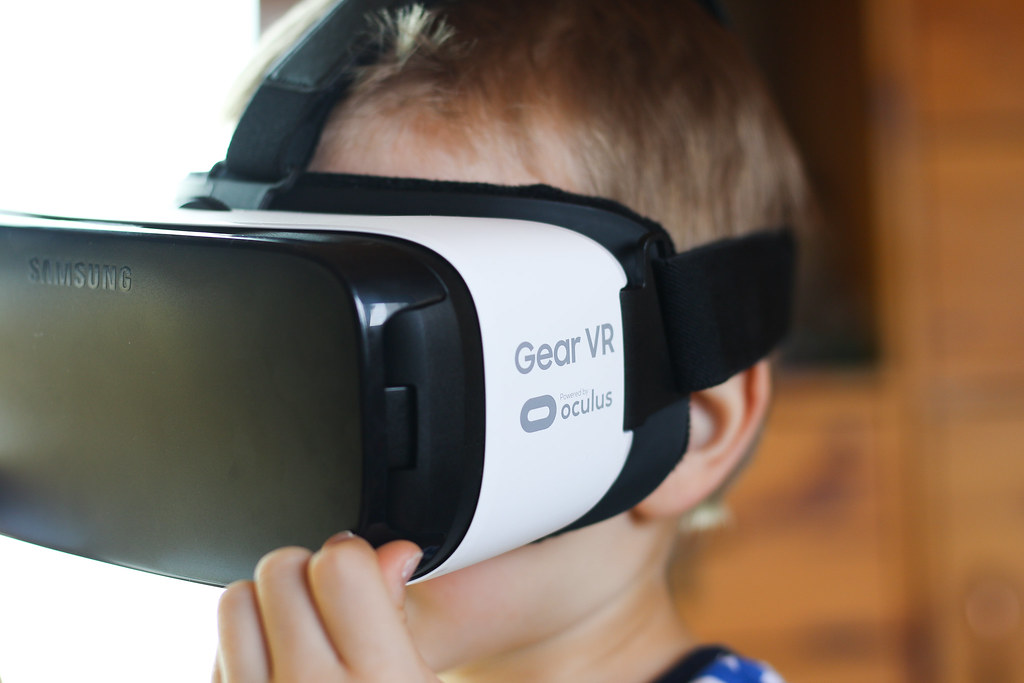
My blog thus far has primarily focused on global collaboration in education. How can we get more connected with each other throughout the world? It seems like VR would be a major stepping stone in the progress of global connection. As the article above suggests, VR can make an environmental science student in New Jersey feel like he is in the Amazon Rain forest or an art student in Kansas feel like she is at the Louvre in France. The possibilities are endless for where we can “travel,” with VR. In my global collaboration studies, I have found one major theme that VR tackles head on. This theme is breaking through the four walls of the classroom. With VR, these walls are just obsolete boundaries, not confining students in any way.
I did some research on, “Google cardboard,” which is Googles VR product. I found some very useful information from just scrolling through their website. Importantly, it seems affordable. This is extremely important for schools because most education systems work within a budget. The original google cardboard viewer, which is what you place the VR system (your smartphone) in, is only 15 dollars. I also found on the website that there is a VR camera where students can take their on photos/videos in VR and then can relive what they captured at a later time. This would be useful during field trips and other activities where students were permitted to use their phones. There are many other applications that use VR. Some of these include Youtube where students can watch videos from a 360 degree viewpoint and a Paul McCartney app where students can feel like they are at an actual concert.

To me, it seems like VR is beginning to gain a grip on the virtual world. I think that as time goes on, more and more applications will begin to be released, many of these being educational. Just like every advancement in technology, teachers will decide how to implement VR into the classroom. I believe that the use of VR in the classroom will engage students and get them extremely interested in lessons. VR is already starting to make its way into classrooms today. In this video, a middle school student from Iowa who is an aspiring architect explains how the tallest building in his town is only about 50 feet tall. His class takes a VR field trip to the Burj Khalifa in Dubai, which is the tallest building in the world. The joy in the voices of the awed students in the video is amazing. VR allows for great possibilities. Here is a sample lesson plan that uses VR to allow kids to explore the surface of Mars, our neighboring planet.This is something that could have never been done before. This advancement in technology is one that can really change the education system for the better. I am excited to see what VR brings in the future!
Animatron: A Review
After multiple frustrating hours of trying out the storytelling website, animatron, I came up with my final product of the story of my duck Oakley. The website itself can be found by clicking on this link. My intentions for trying this website out were to see how easy it could be to tell a story online through using a website designed for that specific task. However, I found that this particular website was a money trap. After spending hours trying to work with the extremely slow software and feeling fatigued, when I went to finally publish my work I found out that I could only publish up to two minutes of footage and there would be a watermark throughout my video as you will see when you click on the link provided above. Additionally, unless I bought the actual software, the quality of my video would be the worst possible. I believe that this website was a trap to get people to work hard on their projects and then feel that they had to buy the software to get the most out of their work.

In a positive light, it was easy to upload my own pictures and videos on to the site and implement them into my final project. However, editing this uploaded media after the fact proved to be a slight problem as well. There were not many options for where I could place the text of my story. Therefore my story about my duck Oakley, went from looking like a narrative to a children’s book. I found that I could not include much information in each slide because it would fill up the frame rather fast. Perhaps if I was to explore the website a little more I would have found other ways to go about this problem but my intentions for this project were to find an easy way of story telling. I would not consider this easy in any way, shape or form.
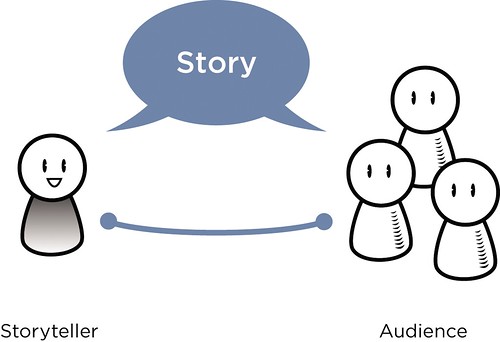
Overall, even though the quality and length of my story disappointed me, I was still able to share my story and post it to Youtube rather easily. Therefore, my work was shared which was the ultimate goal of this project. I feel that I was able to portray the story of my duck well through this application even though I was limited to word use. I think that if someone read this story, they would enjoy it because it was short and sweet even though that was not my original intention. I recommend finding another site to build your story on unless you are willing to pay for the service!
Out of Eden Walk Discussion
In 2013, reporter Paul Salopek began a journey where he would retrace the steps taken by the first humans to migrate the Earth. This project is still in progress today as Salopek makes his way through India in April of 2018. The expedition began in Africa and has been “broadcasted,” on the National Geographic website ever since as the team has shared photos, videos, and stories of individuals who Salopek has come across. Salopek has trekked through these locations and shared stories of these folks with anyone who wishes to see, connecting us all in a way. Every 100 miles Salopek writes a milestone post where he shares a story of an individual that he met in attempt to record a “global snapshot in time.” He also includes a panoramic shot, a short video clip, a landscape and sky picture and a brief description of the location. In this blog I will go into detail about three milestones that I visited on the website. I recommend you check out the full website for yourself to explore Salopek’s revolutionary experiment.
Naturally, the first milestone I decided to dig deep into was milestone 1, which was called Herton Bouri. It is believed that the first humans lived near Ethiopia due to early human fossils being found in this location. Additionally, the bible mentions the Garden of Eden being near this location which is where the story of Adam and Eve took place. On day 1 of his journey, Salopek stood on the dusty ground of Herto Village at an 1809 ft elevation as he prepared to step into the history books. The first person that Salopek came across in his Journey was Idoli Mohamed, a 40 year old pastoralist (sheep/cattle farmer). Salopek asked the man a series of questions such as, “Who are You?” “Where do you come from?” and “Where are you going?” The man said that he believes in Adam and Eve and he believes that if he becomes educated one day he can go anywhere including America. He also dreamed of a better life for his children than the one that he has himself. It is easy to tell that this area is scorching hot through Salopek’s photos. The video highlights show that the citizens are not very wealthy but are enamored with the technology that Salopek has brought with him. This is the first of many mile stones that Salopek will achieve.
The panorama view of milestone 11 shows two camels, two men, and lots of desert. This milestone marked 1,000 miles and was located near Dahaban, Saudi Arabia at an elevation of 15 feet. In the description, Salopek talks about his intense fight with the will to continue the walk as the sun continued to beat down on his back. Again, the landscape and sky pictures suggested that there was an extremely hot sun shining down. Unfortunately, this milestone offered no people to be questioned by Salopek as no one was around to be interviewed. However, the video that Salopek posted about this milestone included a nearby highway where people were speeding by. This proved that the area is industrialized to a certain point. It is interesting to think that this is where the first migrating humans traveled through. Of course, there was no highway back then!

The final milestone that I will discuss is the most recent. The current chapter that is in progress as I type this is Chapter 5: Riverlands. Currently, Salopek is walking through Southeast Asia, viewing the fertile lands and water systems. Much different from the first two milestones that I covered, milestone 54, grand trunk road is not a dry, desert-like area. The Grand Trunk Road is older than buddha and has linked South Asia to Central Asia for 2,000 years. In this location there are people everywhere, unlike the previous two that I discussed. The photo that was shared included plenty of vegetation and traffic signs which also differed from either of the two previous locations before. The man that Salopek interviewed was a robber who was transformed by his religious leader and he claimed to have a different heart now. He is now a rickshaw driver who gives rides to poor people when they need them.
Exploring this page is like being on the journey for yourself. My favorite part was hearing the stories of the men and women that Salopek encountered along the way. To me, it is heartwarming to think that no matter how far they are, each human has a unique story that teaches lessons and that is just as important as the next. This is evident through the last story I discussed which is tells of a robber who turned into a giver. Looking through this website can not only teach history lessons but life lessons as well. This is a great tool to give students as they can navigate the site as they please and learn valuable information.
Google MyMaps: Great Gadget
“When are we going to use this in the real world?” This is the age-old question that has plagued teachers for centuries. Although this is an answerable question for most subjects, it is not always so easy to explain. However, every once in a while there is a gadget that can be used both in a school setting and in the real world, and it is easy to see why. This is the case with Google’s “Google MyMaps” which allows users to customize maps to make their own markers, routes and shapes on top of a “Google Maps” layer.

My first experience with Google MyMaps came recently when my global education class was asked to make our own maps to see how the gadget worked. I was asked to place five markers on the map of locations that had any meaning to me. I chose five spots West of where I live that I want to visit in the future. After placing the markers I realized how well these dots seemed to connect on the map so I made a route out of it. This allowed me to see which cities my potential drive would go through on the map. Ultimately, this made my dream of a Westward road trip seem like a viable possibility. Because of this, I have decided that as I find more places I want to go, I will add them to my map and adjust the route accordingly. It is very likely that when I embark on this trip, I will use this exact map as a guide. This map will serve me as a motivator, organizer and hobby. Here is a link to my work-in-progress map.
Here is a tutorial on how to use Google MyMaps which can be very helpful when trying to complete certain actions. As I mentioned, this is a great tool for making routes. Additionally, it can be used to save memories of places that you have traveled in the past or mark places where you want to go in the future. With Google Mymaps, you can even share your maps with others so that they can view your maps and/or help you edit them. The advantages of using Google MyMaps for personal reasons are obvious, but what about school?
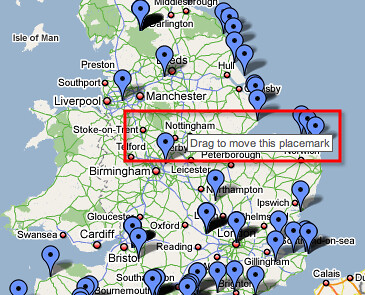
How can this tool be used in education?
One of the best features of this tool is the ability to place markers with descriptions under them. This means that students can place a point at any location and write anything next to that point. In a history class, students can place markers along significant locations of the Civil War that occurred in the the United States from 1861 to 1865. For example, a student can place a marker on Fort Sumter in Charleston, South Carolina and write, “This is where the first shot of the American Civil War was fired.” In a marine science class, a student can place markers along coast lines and explain what unique species live in those specific areas. Near the Bahamas, a student can place a marker and give facts on the Nassau Grouper in the description. There are many other examples of what students can do in other subjects using Google MyMaps. Some other tools include a ruler to measure distances between places and a shape drawing tool. Overall, Google MyMaps seems like a gadget that will bring life into the classroom as students will be excited to use the interesting technology. Students can learn while having fun through using Google MyMaps.
Global Collaboration
Online global collaboration is a major component of being a modern global educator. Together we are stronger and this shows through global collaboration. Global collaboration allows us to teach an learn together. There are eight norms of global collaboration that each collaborator normally abides by but in this post I will only focus on the first two norms. These first two norms are arguably the most important for any global educator, they consist of being prepared and having a purpose.
Norm 1: Be Prepared
Being prepared is a good piece of advice for any scenario. Whether it is in sports, economics or education, preparation allows for two great advantages. The first advantage is that if something is to go wrong you are ready to adapt to that new obstacle. Additionally, being prepared gives the advantage of confidence. When you are prepared, you know the content of the scenario and you are able to be sure of what you are doing, saying, or presenting. This confidence limits any hesitations you might have.
In terms of global collaboration, being prepared means having a plan for connecting. You must find which platform you will use to connect with others; examples include Skype and Google hangout. Additionally, be prepared with who your partners will be in this specific collaboration or hangout session. Finding other members of your PLN who share similar interests is a good start to choosing who you will invite to this event. Another major problem could be technical difficulties. It is important to ensure that the platform you are using is compatible with where ever you will be hosting from. A potential problem could be school servers blocking specific websites. In being prepared, it is important to think of little things that might happen. The possibility of time zone differences and students not being able to access specific materials at home are examples of these potential problems. When collaborating, it is also important to set guidelines for what is expected from the other teachers and the students. How often do you expect to communicate? Weekly? Daily? Will there be synchronous meetups? Asynchronous sharing? Perhaps both! The important thing is that all students know what is expected from them. How will you and other teachers communicate before reaching out to the students? When using Skype and Google hangout, should students ask questions during the presentation? Or after? All of this should be discussed BEFORE the collaboration takes place. Once every participant agrees on these protocols, you can officially deem yourself prepared.
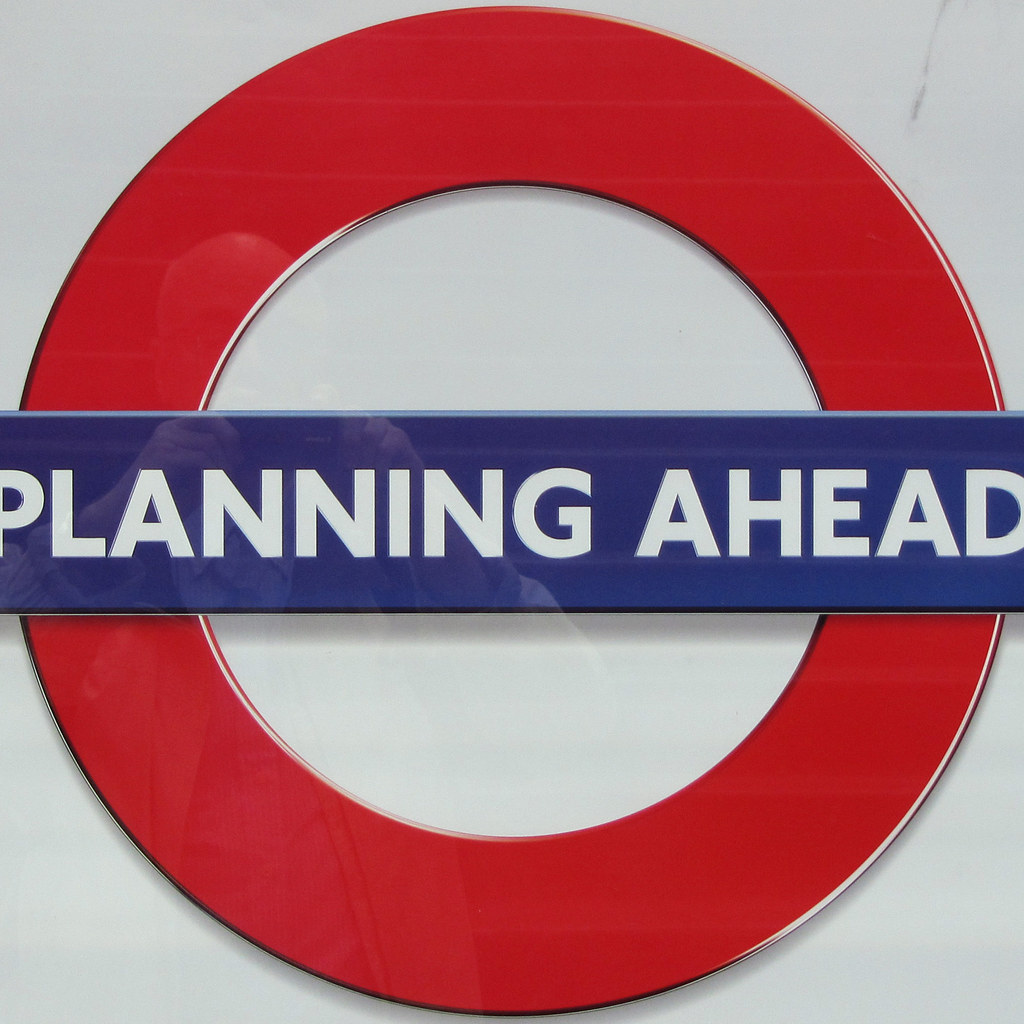
Norm 2: Have a Purpose
Although this may seem obvious, having a purpose is essential for successful collaboration. In fact, having a purpose is part of the planning discussed in Norm 1. What are you trying to achieve through this collaboration? Is this a short-term or long-term project? What will students be sharing with one another during this project? It is important to make the purpose clear. When knowing the purpose of collaboration, it is easier to plan ahead. You then know how much planning you have to do and whether the collaboration will be synchronous or asynchronous. With a purpose and plans, you are truly ready to begin collaboration.
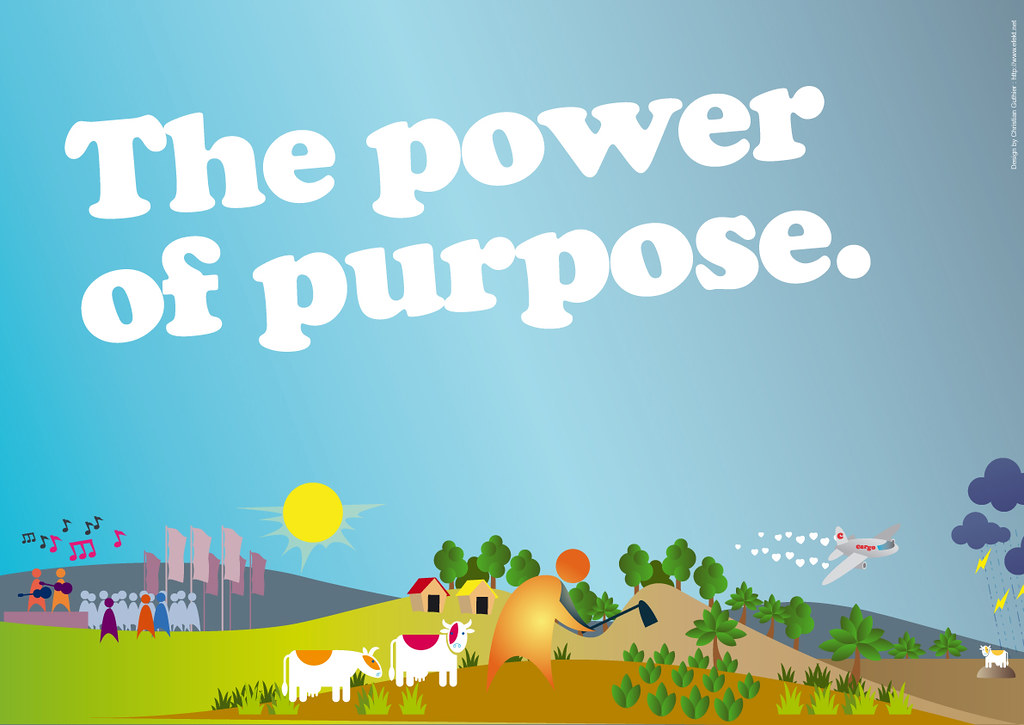
As I stated above, Skype and Google hangouts are good tools for global collaboration. Additionally, blogs such as this one can be a great tool for global collaboration. Students can write their own blog posts, as well as comment on other students blogs from across the world. This is a great idea for collaboration for teachers in different areas. Students love the idea of communicating with people across the country (or even the globe) and they are able to see many new perspectives. Here is a Youtube video about students from England who collaborated with students in India through blogging. This is an essential reason for global collaboration. It is an amazing lesson to see new perspectives from different parts of the world. Also, global collaboration can include speaking with professionals over video chat which shows student that what they are learning is used in the real world. Becoming globally collaborated keeps students engaged in lessons. The list of reasons for the importance of global collaboration goes on and on!
A Blog About Blogging
Previous generations would have most likely dismissed the idea of teaching students primarily through the use of technology. However, education reform is in effect more than ever in recent years. The idea of the, “Global Educator,” and “Global Learner,” are beginning to alter the way that new educators come into schools and their ways of planning and teaching lessons. Previous restrictions of classroom walls are now obsolete as any teacher or learner can collaborate with one another through the use of the internet. Additionally, student-centered learning is beginning to become recognized as a legitimate teaching style. This combination of the use of technology in the classroom and implementation of student-centered learning has led to an increase in the use of student blogging.
I did not get the opportunity to create an educational blog until college. In fact, this is my very first blog. When I first began writing this blog, I was not too sure of the educational and personal benefits that I would receive from my writing. However, after about eight weeks of blogging I have really learned what a student can gain from having a blog. The major benefit that I have found through blogging is the communication and collaboration that I am able to have with my fellow classmates. As well as this, there is no limitation to how much I can learn and what I can choose to learn.

For students, a sense of confidence can really be gained through blogging. In the past, students would be prompted to write an essay, revise it and hand it in to the teacher to be graded. After the teacher briefly read the essay and graded it, the essay would be handed back to the student, most likely never to be seen again. With the use of blogging, a student can write on either an assigned topic or a topic of their choice. After posting their work, not only is the work available to the teacher, but also to the outside world. Other students can comment on their work, giving positive feedback and constructive criticism. This makes a student feel like their work matters and they are not just writing it for a grade. It is this connection between the classroom and the outside world that yields a smooth transition from school to the real world. If students are already communicating with the outside world while they are in school, they will not feel much different when they become part of the outside world. In this video, two young students talk about the benefits of blogging and why they love blogging!

In an article posted by George Couros, he lists five reasons that students should use blogging. That article can be found here. These reasons include students could reflect on their own thoughts, develop literacy techniques, have a voice, archive their work and develop a positive digital footprint which is important for the future of the world. I found this article to be accurate after reacting with blog posts of middle school students from Oregon. These students were extremely excited to get comments on their posts from college students like me who lived across the country. Blogging can potentially transform the way that we teach and learn. Although this method seems atypical of the education that we have known in the past, blogging could be a great catalyst for the future in education reform.
An American Perspective on a German TV Show
For one of my college courses, my professor asked that we watch a TV show in another language with subtitles in English. After scrolling through Netflix, I found a German show called, “Altes Geld” (“Old Money”). I watched the first episode was called “Buschtrommeln” (“Jungle Telegraph”), and can be found right here. The show focused on the very rich family of Rolf Rauchensteiner. Although extremely wealthy and powerful, Rolf finds that it is extremely difficult to find a liver that he needs to stay alive after being diagnosed with hepatitis. The show really depicts the materialistic views that the whole Rauchensteiner family has. When Rolf tries to explain to his wife that he is going to die within a year he tells her that he has some bad news. She responds by saying, “Have you donated your fortune?” After answering no she says, “Then it can’t be that bad.” This shows what is truly important to his wife. She doesn’t seem to even be too concerned when he officially breaks the news to her. Additionally, the show focuses on the beautiful houses that each family has and the Mercedes Benz’s that they drive. The remainder of the first episode deals with various wrongdoings. These include a gambling addiction that one son has, another son’s estrangement from the family, suicide attempts from the daughter, drugs and an affair between one son and the step mother. Despite being wealthy, nobody in this family truly loves each other.

I found that this show was not too far off from American culture. It is often said that rich, materialistic people are the least happy in life. True happiness comes from genuine human connections. The saying “Money can’t buy everything,” applies in this show because Rolf has all of the money possible yet cannot actually buy a liver. He must, instead, find somebody who loves and wants to help him. When Rolf tells his kids about his disease, they only care about the will. This shows the lack of connection between the family. Another similarity to American culture was that at one point the daughter met a man at a train station and he said that he knew her from Facebook. This shows how globalized social media really is. No matter where you are in the world, America or Germany, anybody can know anybody from online. One last similarity was a character who was in the “Green Party,” of politics. This man was very focused on cleaning up the environment and preserving the Earth. I feel no matter where you are, saving the environment has become a worldwide concern. Rolf tried to offer this man 7 million dollars for his liver but the man declined.

Some cultural differences I found were that the characters talked extremely fast throughout the whole entire show. Conversations would go from one character talking to the next in the blink of an eye. Additionally, a creepy piano tune played throughout the whole entire show. I found this interesting because I don’t remember ever hearing that on an American show before. It also seemed like the characters were less friendly in this show to one another than we are here in America. It was hard to determine if this was due to their wealth and arrogance or due to their culture. The architecture in the show was beautiful. The show took place in a city with buildings which were beautifully designed and looked almost like castles. I could really notice the European-like style to them. I have never seen buildings like that in America before. Also, at one of the clubs a son attended, all of the bartenders wore duck masks. I found this interesting as the bar was called “Dark Duck.” No scene really depicted any of the characters eating, yet they did drink wine in multiple scenes. The weather was very nice throughout the whole show.
Twitter for Teachers: Pros and Cons
Approximately one year ago I deleted my personal Twitter account because I found that the website was filled with stubborn users who wanted to debate issues with no intention of compromising. Along with this, the users that I “followed,” often used disturbing language and insults to prove their points. The website had brought so much negativity into my world that I decided I should abandon it. However, I was brought back into the world of Twitter this current semester in college when one of my professors suggested that we use the website to build a PLN (Personal Learning Network) that included us with other teachers around the world. Here is a youtube video on how a “PLN,” works. After a few weeks of using Twitter for this purpose, I have come up with several conclusions on how I feel about the website from this new perspective.

Initially, my thoughts about downloading Twitter again were negative. I knew that I would have to see arguing and terrible News that I tried escaping from a year ago. However, I found that this specific community of educators was more supportive of each other than anything – this is my first pro.
- Pro #1 – You are surrounded by a community of teachers who understand and live through similar experiences as you. They are a great form of support and a good source if you need tips on any issue in specific.
Additionally, I found that within this community, members LOVE to share ideas. I often see teachers tweeting links to fun activities in the classrooms and tweeting pictures of projects that their students completed in school. This is another great pro of the educational twitter community.
- Pro #2 – Twitter is a great source for new ideas and lesson plans!
Every day that I log onto twitter, I gain new ideas from other teachers. This is the true meaning of global connected learning. I am learning from them and they are learning from me. In return, our students will gain even more knowledge and ways of thinking through our use of global learning. Originally, I believed that teachers using social media like Twitter was unprofessional but now I see that this is the best way to learn. The more I converse with teachers from all over the world, the more I see the importance of technology in education. This has 100% altered the way I think about learning.

The major thing that I have learned throughout this experience has been the work that teachers put in, both inside and outside of their classrooms. Teaching is not your typical 9-5 office job. The day begins with you showing your students that you care about them and ends with you making sure they are learning both intellectually and about life. Some teachers use their own money to buy supplies for their classes. These teachers that I see online think about their students often, both inside and outside of the classroom. This leads me to another pro.
- Pro #3 – You are surrounded by people who genuinely care, and this is heart warming.
In a Twitter chat I participated recently, we discussed “self-care” of teachers. Many of the teachers talked about how they often value their students over their own self health. Although, this is commendable, it is scary! I believe that this could be one con to an education based community on Twitter — obsession. An example of this twitter chat can be found here where one teacher talks about what it is like to finally have relaxation time but then get called in to substitute. It is hard to say no as a teacher, you feel you owe your time to the students.
- Con #1 – Using too much time on Twitter ; trying to better yourself for your students and not having enough time for yourself.
Overall, the pros outweigh the con(s) when it comes to the PLN that Twitter provides. I have developed a very positive outlook my first few weeks back on twitter. I believe Twitter is a great tool for teachers to use and is an essential part of becoming a global educator.
Making A Change
As a future educator, my one goal is to make change. Whether this change is on a small scale and focuses on individual students or it is on a large scale and works on education reform, I just want to have an impact. I feel that most new teachers go into their job with this mindset as well but it end up losing their drive. I plan on ensuring I keep this goal through persistence and dedication. An example of a teacher with this mindset was spelled out in The Global Educator by Julie Lindsey where a teacher named Sonya explains how she plans to make a difference in the current generation of children. This way, she can stride to work with this new generation to change the policies and laws that effect our daily lives. An example of this happening currently is a walk-out that is being planned by organizers to protest the current gun-control laws. After the various mass shootings that have taken place in schools over the past year, this protest is being designed to get law makers attention. The protest is encouraging teachers, students and parents to walk out of school for 17 minutes to honor the 17 victims of the most recent school shooting. This is being called the National School Walkout and is going to take place on March 14th, 2018. More can be read about the event here.
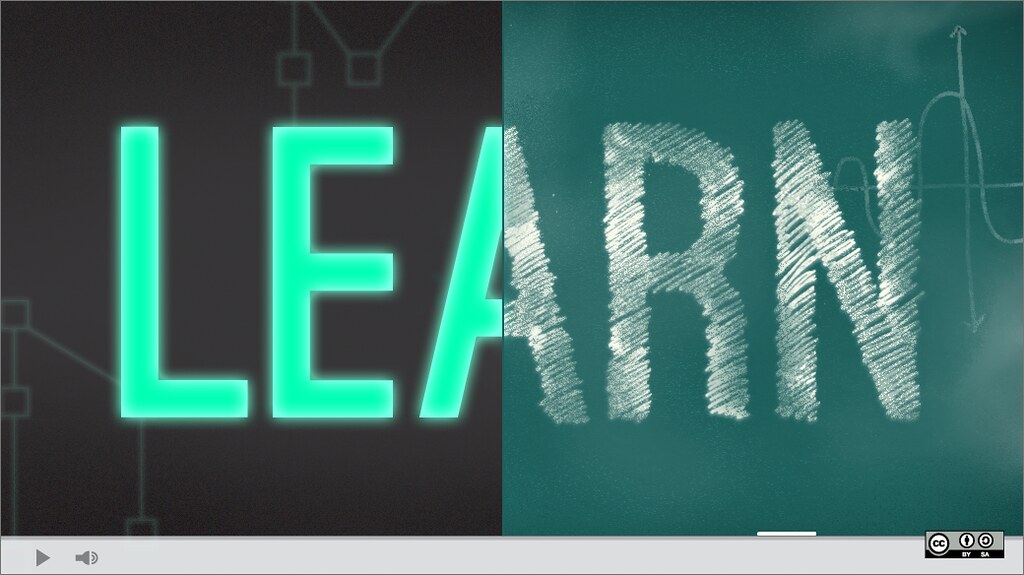
Another teacher mentioned in the book who wants to make a difference and effect change is Kate of the United States. She wants to focus on making education more inclusive and equitable. She wants to focus on how the current system is unfair to those who live in poverty. If you are interested in this topic a great article to read can be found here. This article was shared by a classmate of mine on Twitter. The article discusses closing the achievement gap in schools. My favorite part about this article was hearing about the difference of the people who analyze this gap versus those who experience it. It is hard to understand every situation unless you experience yourself. This is why the power of listening to other peoples opinions is extremely important because we all have different backgrounds and different knowledge.
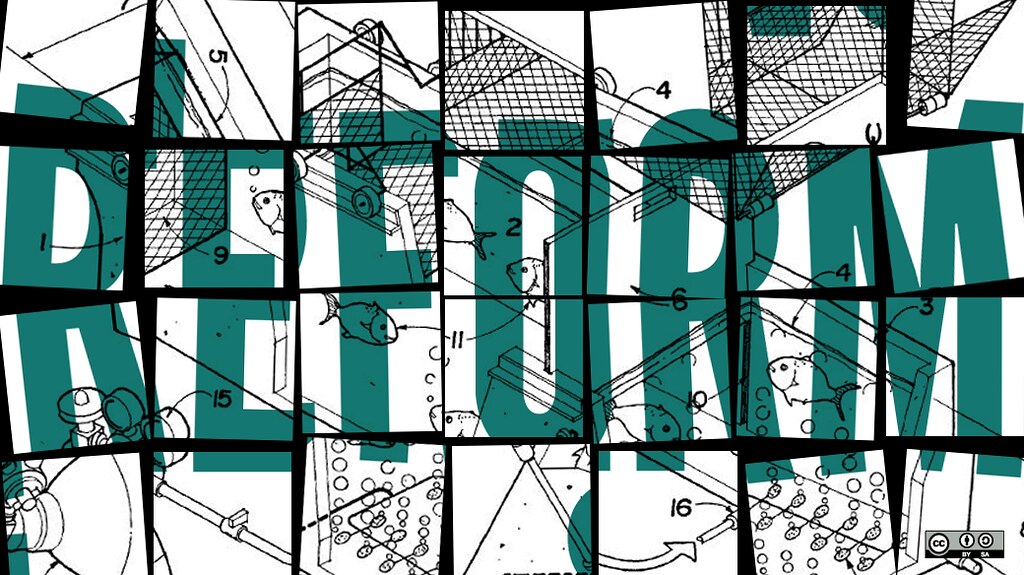
The textbook goes on to give many examples of global educators from all over the world that want to make change. From the USA, to Iran, to Brazil, each educator wants to make a change for the better. Although we all may focus on different aspects of change, we can all make the education system, and the world, better through progressive action.
Recent Comments